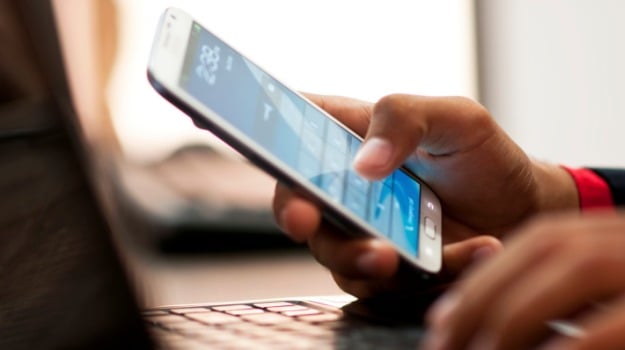Our brains are adapting to smartphone technology: study
According to a new study published in the journal 'Current Biology', brain activity in the regions connected to the thumb and index finger is higher in those who use a touchscreen smartphone than the brain activity of those who don't.
Arko Ghosh, researcher at the University of Zurich and ETH Zurich in Switzerland said, "I was really surprised by the scale of the changes introduced by the use of smartphones. I was also struck by how much of the inter-individual variations in the fingertip-associated brain signals could be simply explained by evaluating the smartphone logs."
Ghosh and his colleagues realised that smartphones could be a grand opportunity to explore the everyday plasticity of the human brain. It's amazing to see how people are not only using their fingertips, especially the thumb in a new way but also how often they're using it.
To link digital footprints to brain activity in the new study, Ghosh and his team used electroencephalography (EEG) to record the brain's response to mechanical touch on the thumb, index, and middle fingertips of touchscreen phone. Then, they compared the data with that from users who still haven't given up their old-school mobile phones. They had a total of 37 volunteers, 26 of them used touchscreen phones while the other 11 used traditional, more old-fashioned phones.
The researchers found that the electrical activity in the brains of smartphone users was enhanced when all three fingertips were touched. In fact, the amount of activity in the cortex of the brain associated with the thumb and index fingertips was directly proportional to the intensity of phone use. The thumb tip was even sensitive to day-to-day fluctuations: the shorter the time elapsed from an episode of intense phone use, the researchers said, the larger was the cortical potential associated with it.
The results suggest that repetitive movements over the smooth touchscreen surface reshape sensory processing from the hand, with daily updates in the brain's representation of the fingertips. Researchers concluded by saying that "We propose that cortical sensory processing in the contemporary brain is continuously shaped by personal digital technology." They feel their cocnlusions are justified since the brain is highly impressionable and can be moulded by experience.
With inputs from PTI











